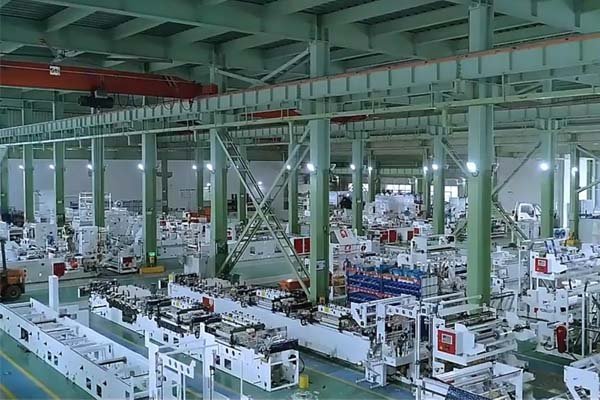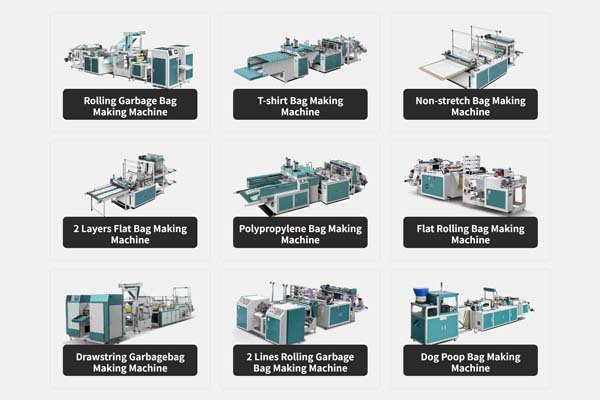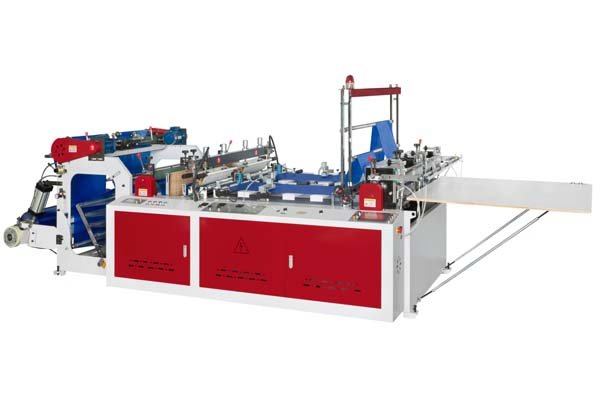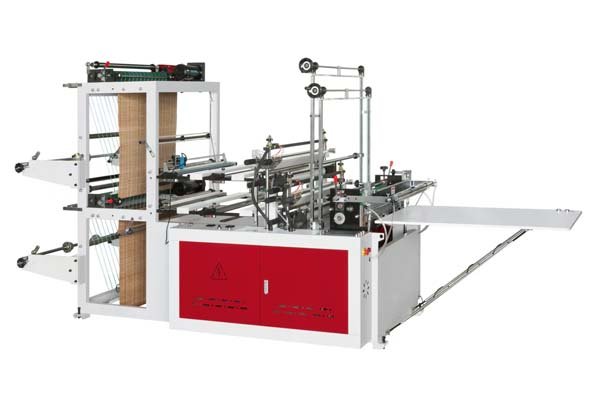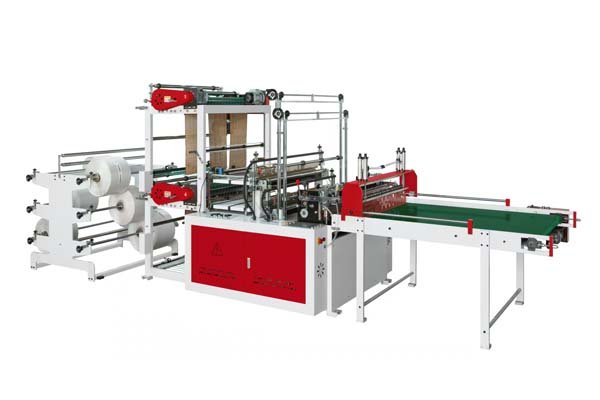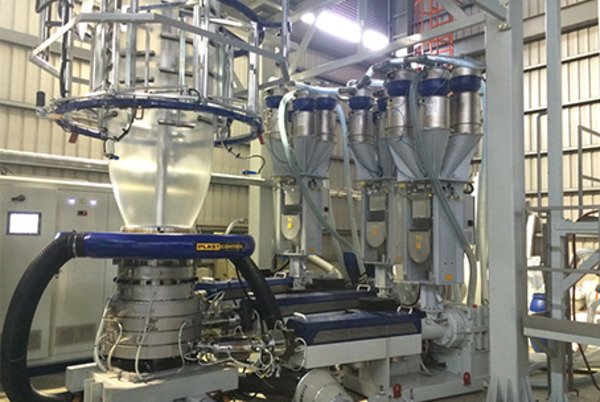
Are you struggling to control your plastic film's final width? Getting it wrong leads to wasted materials and production delays. We can help you understand the direct link between these key factors.
The relationship is direct and proportional. A higher blow-up ratio1 (BUR) expands the film bubble more, creating a wider film. A lower BUR results in a narrower film. It is a primary setting for controlling final product dimensions.
The blow-up ratio is a fundamental concept in blown film extrusion. We calculate it with a simple formula: the final diameter of the film tube divided by the diameter of the circular die. This ratio is one of the most important parameters you can control. It directly determines the final flattened width of your film. But it also has a major impact on the film's thickness, strength, and even its clarity. Understanding how to manage the BUR is essential for producing high-quality bags consistently and efficiently.
Mastering this single setting allows you to adapt your production for different bag sizes without changing the physical die. For example, a BUR of 2:1 means your final bubble diameter is twice the size of your die. A BUR of 3:1 makes it three times wider. This simple
adjustment, controlled by the volume of air blown into the bubble, gives you incredible production flexibility. It allows your operators to set up jobs quickly and accurately, minimizing downtime and material scrap.
How Does Blow-Up Ratio Impact Film Thickness and Mechanical Properties?
You know BUR controls width. But what about the film's thickness and strength? The blow-up ratio plays a huge role here as well.
A higher BUR stretches the material more across its width, resulting in a thinner film. This process also orients the polymer molecules, which typically improves strength in the transverse direction (TD) and enhances film clarity.
When you increase the blow-up ratio, you are stretching a fixed amount of melted polymer over a larger circumference. This naturally makes the film thinner. At the same time, this stretching action aligns the long polymer chains sideways, or in the transverse direction (TD). This orientation is a key factor that determines the film's final mechanical properties.
Balancing Transverse (TD) and Machine Direction (MD) Strength
The strength of your film is not uniform. It has different properties in the machine direction (MD), which is the direction of extrusion pull, and the transverse direction (TD), which is across the width.
- High BUR: A high BUR significantly strengthens the film in the TD. This is excellent for bags that need to resist splitting open from the sides. However, it can sometimes lead to lower strength in the MD.
- Drawdown Ratio (DDR): This is the other key factor. DDR is how much the film is stretched lengthwise. A high DDR increases MD strength.
The goal is to find the right balance between BUR and DDR for your specific application. You cannot just change one without considering its effect on the other. For a truly strong, reliable bag, you need balanced properties.
| Ratio Setting | Film Width | Film Thickness | TD Strength | MD Strength | Film Clarity |
|---|---|---|---|---|---|
| High BUR / Low DDR | Wide | Thinner | High | Lower | Good |
| Low BUR / High DDR | Narrow | Thicker | Lower | High | Average |
| Balanced BUR/DDR | Moderate | Moderate | Balanced | Balanced | Optimal |
The Importance of a Balanced Profile
For most applications, a balanced film is the best. A film that is strong in one direction but weak in another can fail unexpectedly. For example, a heavy-duty garbage bag needs to resist punctures (which requires good TD strength) and also support weight without stretching or tearing (which requires good MD strength). At BagMec®, we design our machines to give you precise control over both the air volume for BUR and the nip roller speed for DDR. This allows you to produce a film with the exact balance of properties your customers demand.
What is a Typical Blow-Up Ratio for Different Bag Types?
There is no single BUR that works for all products. The ideal ratio depends completely on the plastic material you are using and the type of bag you need to produce.
For general-purpose T-shirt bags made from HDPE, a BUR of 3:1 to 4:1 is very common. For LDPE films that require better clarity and softness, like bread bags, a lower BUR of 2:1 to 2.5:1 is often used.
The choice of BUR is a strategic decision based on the desired end-product characteristics. Different polymers react differently to the stretching and orientation caused by the blow-up process.

High-Density Polyethylene (HDPE)2
HDPE is a stiff, strong material. We often use a higher BUR (from 3:1 up to 5:1) for HDPE films. This high degree of transverse orientation gives HDPE bags, like T-shirt shopping bags, their characteristic crispness and high strength even when the film is very thin. Our T-Shirt Bag Making Machines are optimized to handle these thin, strong films at high speeds.
Low-Density & Linear Low-Density Polyethylene (LDPE/LLDPE)
LDPE and LLDPE are softer and require better optics. For applications like food packaging or bread bags, clarity and seal strength are more important than stiffness. We typically use a lower BUR, often in the 1.5:1 to 2.5:1 range. This lower ratio reduces stress in the film, resulting in better clarity, higher gloss, and more flexible material. Our Wicketer Bread Bag Machine excels at producing these high-clarity bags.
Specialty and Laminated Films
Complex films, such as multi-layer laminates for food pouches, require very precise and stable processing conditions. For these, the BUR is often kept lower and is controlled with extreme precision. The goal is to ensure all layers stretch uniformly without delamination. Our Lamination Pouch Making Machines provide the stability needed to handle these sensitive structures, ensuring the integrity of every layer.
How Does BagMec® Machinery Help Control Film Quality?
Achieving the perfect, stable BUR requires precision machinery. Here is how our machines make this critical process simple and repeatable for you.
Our machines use features like "Smart Tension Control" and high-performance dual-lip air rings. These systems maintain a perfectly stable bubble, which ensures a constant BUR and uniform film thickness3. This directly improves your profitability.
Consistent film quality starts with a stable bubble. Any fluctuation in the bubble's size or shape will cause variations in film width and gauge, leading to defects and waste. We build our machines with advanced technology to eliminate these problems.
Key Features for Stable Production
1. Advanced Air Ring Design
Our machines feature dual-lip air rings. These provide a high volume of cooling air in a very stable, 360-degree pattern. This uniform cooling locks the bubble in place shortly after it leaves the die, preventing it from shaking or drifting. A stable bubble means a a consistent BUR from the start to the end of the production run.
2. Internal Bubble Cooling (IBC)
For high-output applications, we offer Internal Bubble Cooling (IBC) systems. IBC works by circulating cool air inside the bubble, cooling the film from both sides. This drastically improves cooling efficiency, allowing you to run at higher speeds while maintaining stability. It is essential for producing wide films with a high BUR.
3. PLC Control with Recipe Memory
All our machines are equipped with modern PLC controls and a simple touchscreen interface. This allows your operators to save all settings for a specific job, including air ring blower speed and nip roller speed. When you need to produce the same bag again, you just load the recipe. This guarantees perfectly repeatable results and minimizes setup time.
As our customer, a German packaging supplier, found, this level of control is transformative. They used our FFS bag machines to achieve 99% uptime and reduce material waste by 18%, thanks in large part to this repeatable precision.
Conclusion
The blow-up ratio directly controls your film's width and is a key factor in determining its thickness and strength. By balancing BUR with DDR and choosing the right ratio for your material, you can perfect your products. Our machines give you the precise control needed to master this process.
-
Understanding the blow-up ratio is crucial for optimizing film production and achieving desired properties in your products. ↩
-
Learning about HDPE's properties can help you choose the right materials for your packaging needs and improve product performance. ↩
-
Exploring the relationship between film thickness and mechanical properties can enhance your production quality and efficiency. ↩

